The Curse of Oak Island: Season 6, Episode 7- Rock Solid
The following is a Plot Summary and Analysis of Season 6, Episode 7 of the History Channel’s TV series The Curse of Oak Island.
[SPOILER ALERT!]
Plot Summary
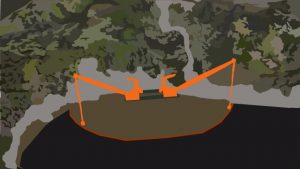
In the War Room, Rick Lagina phones up his brother, Marty, and informs him that the Smith’s Cove cofferdam is nearly complete. Marty expresses some concern regarding the logistics of the upcoming excavation of Smith’s Cove, reminding his elder brother that a tremendous amount of time and labour was required to sift through the spoils from Borehole H8- a relatively minor operation in comparison. Rick addresses Marty concern by revealing that he and Oak Island boys are considering purchasing a wash plant that a local quarry has put up for sale- a piece of equipment which will allow them to sift through spoils more quickly and efficiently.
Rick then heads to Smith’s Cove, where he meets with Dave Blankenship, Charles Barkhouse, Dan Henskee, and Mike Jardine of Irving Equipment Ltd. As the last section of the cofferdam is hammered into the earth, Jardine informs the treasure hunters that they will need to constantly pump the water out of dammed area in order to accomplish their upcoming excavation.
Later that day, Charles Barkhouse, Jack Begley, and Doug Crowell move a large stone into the Oak Island Interpretive Centre. In a later interview, Crowell explains that the late Fred Nolan discovered the stone on his Oak Island property and concluded that it once served as some sort of boundary marker “or perhaps a pointer stone that pointed into the swamp”. In the Interpretive Centre, this boundary marker is placed next to a three-dimensional replica of the 90-foot stone.
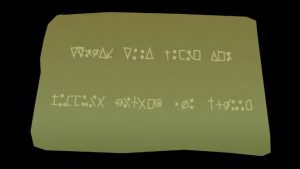
The narrator then reminds us of the legend of the 90-foot stone, which has been lost for decades. Doug Crowell expresses a desire to re-explore the old Halifax bookbindery that he, Charles Barkhouse, Alex Lagina, and Kel Hancock explored in Season 4, Episode 4 (the last known location of the 90-foot stone), opining that the search they made for the stone there was less than thorough.
Later, Rick Lagina, Dave Blankenship, and geophysical engineer John Wonnacott drive to a quarry near the town of Bridgewater, Nova Scotia. There, Greg Mailman of Dexter Construction shows the treasure hunters the industrial wash plant that the company is selling. After a demonstration, Rick suggests that the crew “pull the trigger” and purchase the machine.

Later that day, Alex Lagina and Peter Fornetti accompany Gary Drayton on a metal detecting excursion on Oak Island’s Lot 24, once the site of the residence of Samuel Ball. Drayton quickly uncovers what he identifies as a ramrod- a tool used to tamp shot and powder down the barrel of a muzzle-loading musket. When pressed, he specifies that this particular ramrod was probably an accessory to a Brown Bess musket- a flintlock long gun used by British soldiers in the late 18th and 19th Centuries.
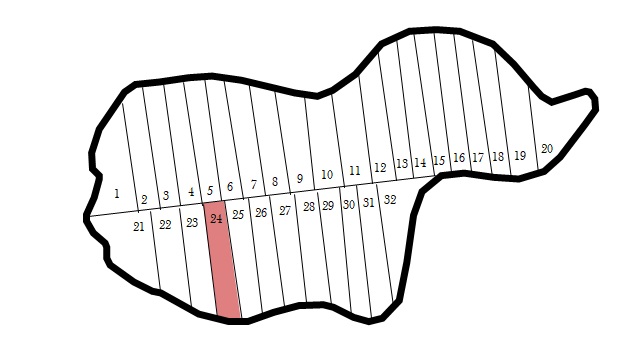

Shortly thereafter, Drayton gets another hit on his metal detector and begins to dig. Before reaching the mysterious metal object, he unearths a fragment of bone. Below that, he finds a shard of blue-glazed pottery, which he believes to be an early 18th Century artifact. Below that, he finds another shard of pottery, this one unglazed. Finally, below the second pottery fragment, he finds the metallic object indicated by his metal detector, which proves to be an old door latch. In a later interview, Alex Lagina suggests that these new finds might be proof that Oak Island was the site of a British military encampment during the American Revolution, and might even constitute the leavings of the original Money Pit builders.
The three treasure hunters call up Rick Lagina and inform him of their discoveries. Rick visits the site and examines the artifacts before declaring that they ought to suspend their mini excavation and allow Laird Niven to appraise the situation.
The following morning, Rick Lagina and Craig Tester supervise the transportation of the newly-purchased wash plant to Smith’s Cove. Meanwhile, Jack Begley, Charles Barkhouse, and Doug Crowell drive to the old Halifax bookbindery the crew first visited in Season 4, Episode 4, which is now the Nova Scotia College of Art and Design (NSCAD). There, the treasure hunters meet with book binding expert Joe Landry, who leads them to a basement beneath the building. After looking around for some time, the treasure hunters find an entrance to another room that they did not explore during their previous visit.
“That building seems to be ever changing,” says Doug Crowell of the old book bindery in a later interview. “We’ve been looking through the basement, and… there’s new additions, new partitions… It really is like a maze.”
After a good deal of searching, Crowell discovers an object in a corner which matches the description of the 90-foot stone. He clears away a thick layer of dust from the stone’s surface, revealing a simple inscription carved into the rock: the letters ‘L’ and ‘N’. Charles Barkhouse suggests that this artifact might indeed be the legendary 90-foot stone.
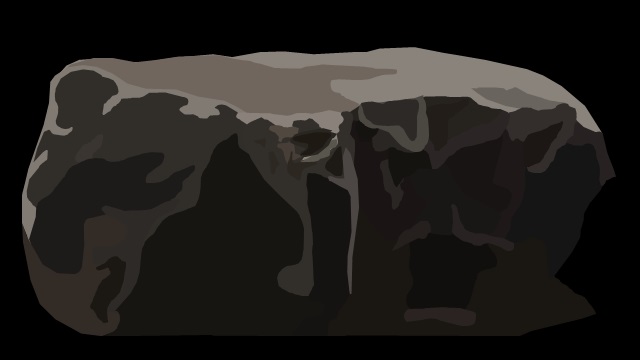
The treasure hunters haul the stone back to Oak Island, where they present it to their fellow crew members in the War Room. Marty Lagina examines the surface of the stone and finds it smooth and bare. “It’s a smooth rock,” he observes. “What am I supposed to be seeing?”
“Well, gentlemen,” Doug Crowell explains, “this particular stone came from the book bindery in Halifax. It was in a crawlspace in the NSCAD building- right where it was supposed to be, in my opinion, because I do think that this is the stone that Bowdoin saw in the book bindery… the supposed 90-foot stone.”
When Marty Lagina remarks that this stone, unlike the 90-foot stone of legend, does not appear to bear any inscriptions on its surface, Crowell reminds him that the 90-foot stone’s cryptic inscription was allegedly worn away as a result of its employment as a beating stone in the book bindery. This defacement was said to be complete by 1909, when Oak Island treasure hunter Henry (or perhaps Harry) L. Bowdoin examined the stone and found no evidence of any inscription. Crowell then points out the letters ‘L’ and ‘N’- the only characters that appear to have survived the erosion.
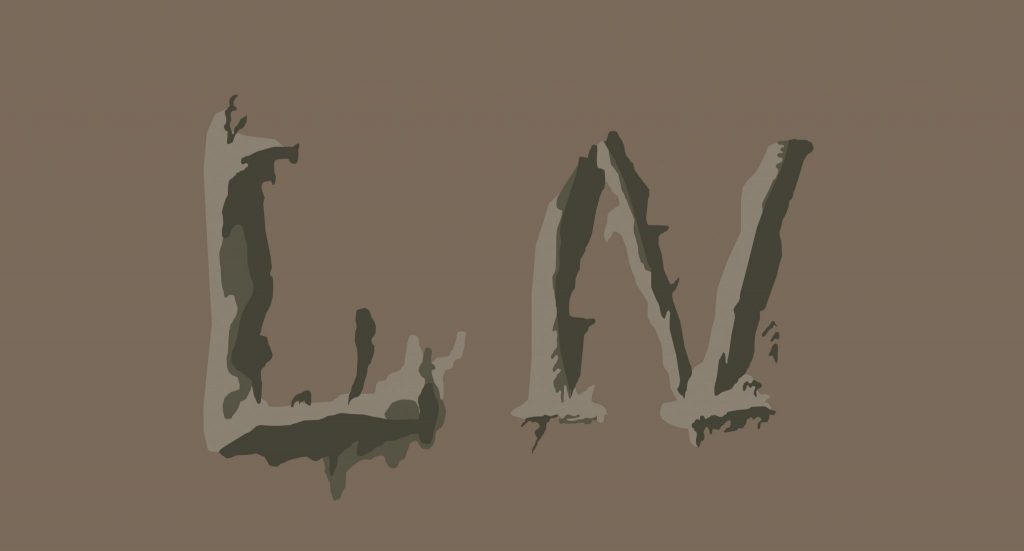
Marty Lagina then informs the crew that, back in 2002, Wessex Archaeology, in conjunction with 3D laser scanning company Archaeoptics, used laser scanners to reveal ancient carvings on the menhirs of Stonehenge (a mysterious Bronze Age monument in southwest England), which are invisible to the naked eye. He suggests that they might be able to conduct a similar scan on the 90-foot stone and reveal the rest of the faded inscription.
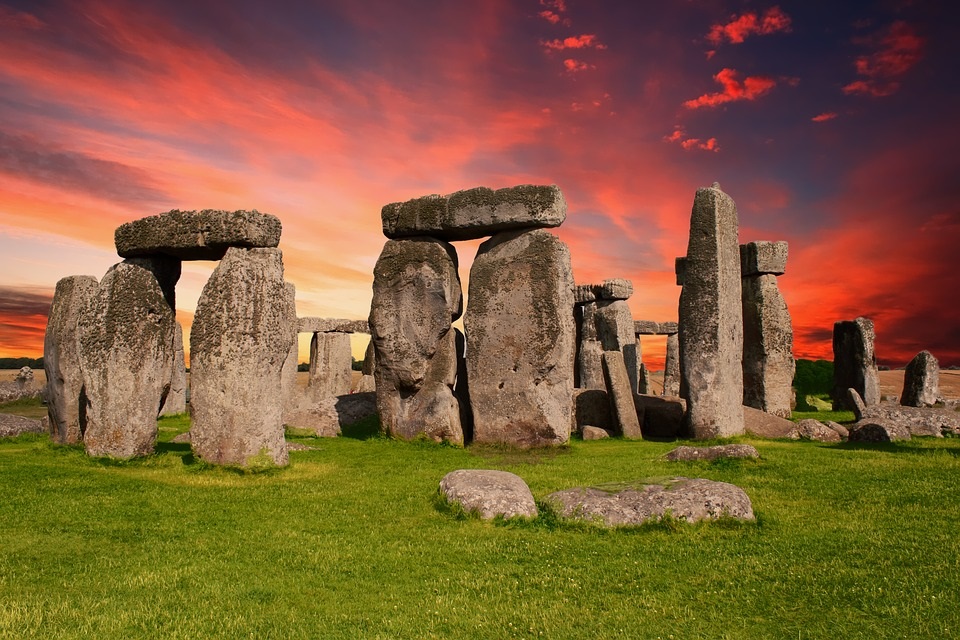
The next morning, Rick Lagina and Craig Tester head to Smith’s Cove to assess the results of a draining operation that has been taking place there. Unfortunately, a significant amount of water remains in the dammed area. To make matters worse, Rick spots three major leaks in the cofferdam. “That’s not going to work,” he says. In an interview, Rick explains that the crew will not be able to proceed with the Smith’s Cove excavation before the leaks are fixed.
Rick and Craig proceed to the War Room, where they phone up Mike Jardine of Irving Equipment Ltd. and inform him of the setback. Jardine suggests that they might be able to stem the leaks with silicon caulking applied on the cofferdam’s seaside face.
The following morning, Rick Lagina, Alex Lagina, Peter Fornetti, and Gary Drayton bring Laird Niven to the site of their latest discoveries on Lot 24. The treasure hunters apprise the archaeologist of the manner in which the discoveries were made and show him the artifacts. Niven identifies the piece of glazed pottery as a shard of hand-painted pearlware from the 1780s, and suggests that the hole from which the objects were retrieved might be the remains of an old well. He further recommends a procedure by which they might excavate the potential structure in an archaeological manner, whereupon Rick tasks him with initiating this procedure.
Later, the Oak Island team meets in the War Room, where they call up astrophysicist and aerospace engineer Dr. Travis Taylor. Taylor tells the crew that he would like to perform an exercise called “data fusion”, in which he would compile the data from the seismic surveys conducted in the Season 6 premiere and analyze this data amalgamation in the hope of revealing “something that you don’t realize is there”. The Fellowship of the Dig takes Taylor up on his offer and invite him to try his hand at wresting some new information from the seismic survey data.
Later, Rick Lagina and Peter Fornetti check on Laird Niven’s progress on Lot 24. The archaeologist, the treasure hunters learn, has uncovered a bed of rocks immediately below the surface. Niven explains that the artifacts discovered in the area indicate that the place was probably inhabited at some point in the past, and suggests that that the larger rocks might be structural, while the smaller rocks might be fill. “It could be a shaft or a tunnel that was filled in,” he concludes, before informing the treasure hunters that they will need to apply for a permit before they can excavate the potential structure further.
After the Oak Island crew celebrates the new discovery at the Mug & Anchor Pub in nearby Mahone Bay, Alex Lagina and Peter Fornetti begin applying silicone caulking to the outer wall of the Smith’s Cove cofferdam in accordance with Mike Jardine’s advice.
Meanwhile, the rest of the crew meet in the War Room, where they welcome Dr. Travis Taylor to the island. Taylor, who had already conducted his “data fusion” exercise, presents the results of his work on his laptop. His analysis reveals the presence of vertical anomalies in the Money Pit area between 20-30 metres (65-98 feet).
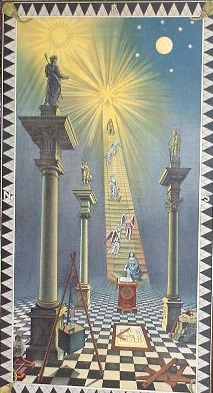
Next, Taylor suggests a novel method by which underground anomalies might be located. He explains that uranium, which can be found in deposits throughout Nova Scotia, naturally decays into a number of products, one of which is radioactive radon gas. He further explains that radon gas accumulates over time in underground caverns devoid of ventilation, and suggests that the crew might be able to locate these radium-rich caverns using Geiger counters (devices used to measure radiation).
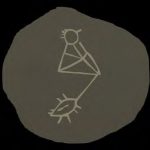
Finally, Taylor presents his own Oak Island theory. Due to the striking number of Oak Island treasure hunters who were Freemasons, Taylor believes that members of some sort of Freemasonic fraternity were behind the Oak Island mystery. Taylor shows the treasure hunters an image of a First Degree Masonic Tracing Board- an illustration depicting a number of Freemasonic symbols which represents the blueprint of Hiram Abiff, the legendary chief architect of Solomon’s Temple. In the top-right corner of the board is a cluster of seven stars, which Taylor suggests represents Pleiades, a cluster of stars belonging to the constellation Taurus. Taylor proceeds to show the crew a map of Oak Island on which the constellation Taurus has been overlaid. He goes on to compare this image with one of the Bedford Barrens petroglyphs (Mi’kmaq rock carvings located just outside Halifax; first introduced in Season 2, Episode 2), which most Mi’kmaq historians believe to be a symbol of reproduction or regeneration, and suggests that the glyph is really a star map created by the Freemasonic Money Pit builders. Ultimately, Taylor urges the treasure hunters to investigate the points on Oak Island which correspond with the stars on his star map.
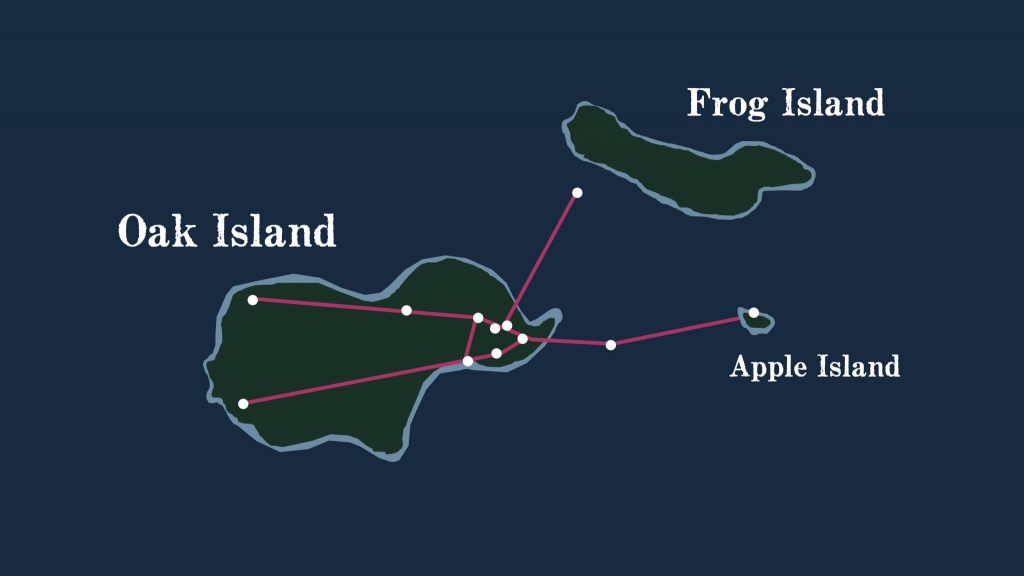
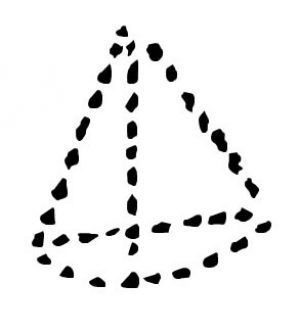
After Taylor’s presentation, Marty Lagina, Jack Begley, and Gary Drayton take the scientist to one of the targets indicated on his star map, which lies on the border of Oak Island’s Lots 1 and 2. Near this location, Taylor spies a large boulder through the underbrush. The four men then proceed to the second location on Taylor’s map, which lies south of the Money Pit area. This area was once the site of the stone triangle. The men then head to Lot 13, where a third point indicated on Taylor’s map is located. Sure enough, they find another large boulder.
Later, Rick Lagina and Dave Blankenship meet with Mike and Scott Jardine at Smith’s Cove. Rick shows Mike one of the cofferdam leaks which still remains following Alex Lagina and Peter Fornetti’s largely successful caulking job, as well as several small pools of water which formed in Smith’s Cove since the draining operation. Mike observes that the pattern made by these pools appears to indicate that more water is seeping into Smith’s Cove from the interior of the island than from the sea. To remedy this problem, he suggests that the team dig a trench close to the shore in which the groundwater will collect, allowing for its easy extraction.
The next day, Rick and Marty Lagina drive to Smith’s Cove, which has been completely drained and dried. There, they meet with Craig Tester, Dave Blankenship, Charles Barkhouse, Peter Fornetti, and heavy equipment operator Billy Gerhardt. The treasure hunters stand by as Gerhardt begins to dig in Smith’s Cove with a backhoe, expressing their desire to uncover the mysterious U-shaped structure discovered by Dan Blankenship in the early 1970s.
Analysis
The Discovery of the 90-Foot Stone
In this episode, Jack Begley, Charles Barkhouse, and Doug Crowell made a trip to the Nova Scotia College of Art and Design in Halifax (NSCAD), where Charles Barkhouse, Alex Lagina, and Kel Hancock searched for the 90-foot stone in Season 4, Episode 4, and where Alex Lagina and Jack Begley had book binding expert Joe Landry appraise the scrap of leather from H8 in Season 5, Episode 12. During this latest visit, the treasure hunters received permission from Joe Landry to conduct a second search in the building’s basement for the 90-foot stone, knowing that the NSCAD building once housed a bookbindery called Creighton & Marshall Stationers, the last known location of the 90-foot stone.
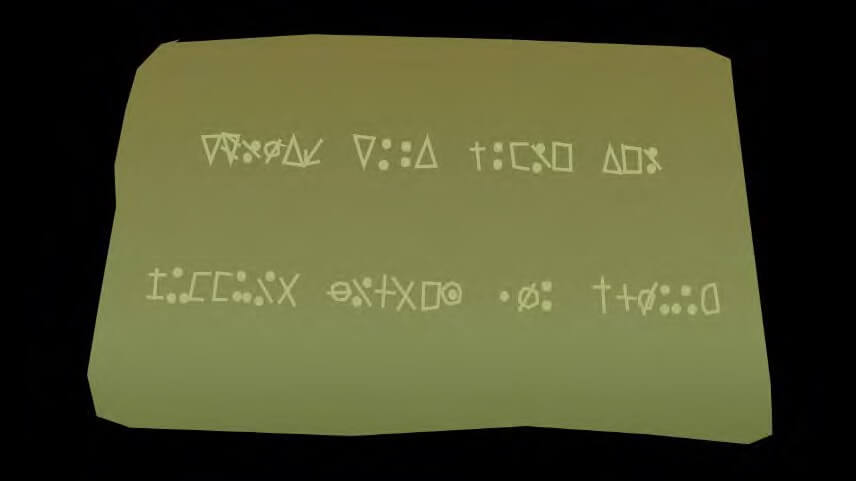
Sure enough, the treasure hunters discovered an object in a dusty, cobweb-choked corner of a basement room (that they apparently overlooked during their previous investigation) which corresponds perfectly with old descriptions of the 90-foot stone. Specifically, the stone appears to weigh around 200 pounds, is flat on two sides, has rounded corners, and measures approximately 24’’x15’’x10’’.

Although the 90-foot stone of legend was said to be inscribed with strange symbols, the upper face of this new stone is bare save for the letters ‘L’ and ‘N’, which have been carved into it. It is possible that these letters are Roman numerals, ‘L’ representing the number ’50’, and ‘N’ being either the medieval Roman numeral for ’90’ (which is the depth, in feet, at which the stone was found) or an abbreviation of the Latin word nulla (zero).
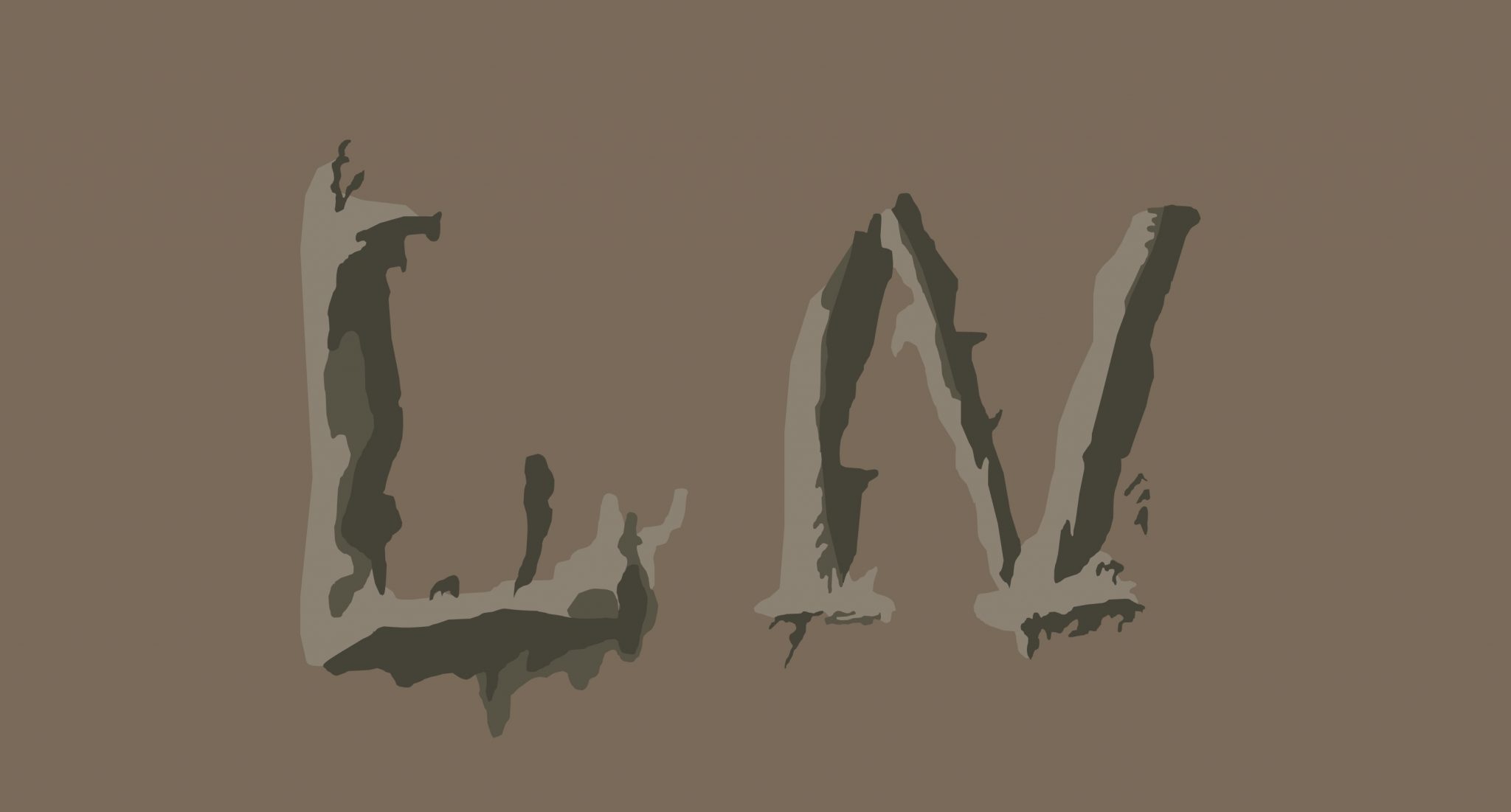
The lack of a strange code on the stone’s face is consistent with the notion, published in the April 29, 1909 issue of the Fairbanks Daily News Miner (of Fairbanks, Alaska), that “the inscriptions were erased long ago after the stone had endured the blows from a bookbinder’s mallet”. The carvings of the Latin letters ‘L’ and ‘N’, on the other hand, injure the credibility of the Kempton symbols- the only supposed copy of the old inscription on the 90-foot stone, which surfaced in April 1949, in a letter written by Nova Scotian Reverend A.T. Kempton to Oak Island treasure hunter Frederick Blair. These symbols, which Kempton purportedly obtained from an “old Irish School Master” from Mahone Bay, who recorded them prior to the stone’s defacement, did not include the letters ‘L’ or ‘N’. If the stone found in the basement of the Nova Scotia College of Art and Design is truly the 90-foot stone, then the ‘L’ and ‘N’ inscribed on its face seem to suggest four possibilities:
- The old Irish schoolmaster who recorded the symbols on the 90-foot stone neglected to include the letters ‘L’ and ‘N’ in his recording.
- The letters ‘L’ and ‘N’ were carved after the old Irish schoolmaster made his recording.
- The letters ‘L’ and ‘N’ were carved on the face of the stone opposite from that which contained the legendary inscription.
- The Kempton symbols are a hoax.

If the Kempton symbols are indeed fabrications, then the handful of theories which hinge upon them are baseless. These theories include:
- The notion that the inscription on the 90-foot stone was a simple substitution cipher which, when decoded, read: “Forty Feet Below, Two Million Pounds Are Buried”.
- Daniel Ronnstam’s derivative theory, presented in Season 2, Episode 5, which holds that the inscription is a dual cipher which also contains the message: “A Ochenta Guia Mija Ria Sumidero F”.
- The various theories based on La Formule.
- Dr. Barry Fell’s hypothesis that the inscription on the 90-foot stone spelled a Libyan-Arabic message using a late Tifinagh script.
- George Young’s derivative theory, which holds that the Money Pit is a tomb for a 5th Century Coptic Christian leader from North Africa.
After Crowell and company presented this new stone to the rest of the Oak Island crew, Marty Lagina suggested that they attempt to reveal the faded inscription using terrestrial laser scanning- a technology which enabled archaeologists to read faded Bronze Age glyphs on the standing stones of Stonehenge. Perhaps this technology will reveal, once and for all, the truth behind the fabled inscription on Oak Island’s mysterious 90-foot stone.
Terrestrial Laser Scanning
In this episode, Marty Lagina suggested that the team use terrestrial laser scanning technology to read the faded inscription on the supposed 90-foot stone found in the basement of the Nova Scotia College of Art and Design in Halifax.
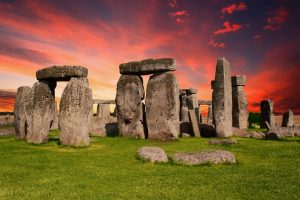
The most famous application of this scanning technology took place in 2002, when Wessex Archaeology (a provider of “archaeological and heritage services”), in conjunction with 3D laser scanning company Archaeoptics, used a triangulating laser scanner called the “Minolta Vivid 900” to examine ancient, faded carvings on the sandstone menhirs of Stonehenge. According to Wessex Archaeology, “the carvings themselves are only a fraction of a millimetre deep in places so any scanner used must be able to record with a suitably high degree of precision”. The scanner ultimately succeeded in revealing Bronze Age carvings of ancient axes and daggers.
The Tunnel on Lot 24
In this episode, Gary Drayton got a hit on his metal detector while treasure hunting on Oak Island’s Lot 24, the lot on which Samuel Ball’s house once stood. While digging for this metallic object, which proved to be a rusted iron door latch, Drayton unearthed a fragment of late 18th Century pearlware, a shard of unglazed pottery, and a piece of bone.

Later, Laird Niven discovered a bed of rocks beneath the site of the discoveries, which he suggested might be the remains of a “shaft or tunnel that was filled in”. He then informed the crew that they would need to apply for a permit in order to excavate the potential structure.
Radon Prospecting
In this episode, astrophysicist and aerospace engineer Dr. Travis Taylor suggested a novel method by which the Oak Island crew might search for underground cavities in the Money Pit area. Specifically, he suggested that the crew use Geiger counters to search for areas of high radioactivity. Taylor reasoned that, since Nova Scotian soil contains relatively high concentrations of naturally-occurring uranium, and since one of the natural by-products of uranium decay is radioactive radon gas, underground cavities on Oak Island might trap and accumulate radon gas, resulting in their possessing higher levels of radioactivity compared to the surrounding earth. Oil and gas prospecting companies sometimes use this method as a cheaper alternative to seismic exploration.
Travis Taylor’s Theory

After sharing his radon prospecting idea with the Oak Island crew, Dr. Travis Taylor presented his own unique Oak Island theory. Taylor, who subscribes to the Freemason Theory (described below), observed that a cluster of seven stars is depicted in the First Degree Masonic Tracing Board- an illustration representing the blueprints of Solomon’s Temple drawn up by Hiram Abiff, the Temple’s legendary Chief Architect. Taylor suggested that this star cluster represented Pleiades, a sub-section of the constellation Taurus.
For Taylor, the inclusion of the image of the Holy Grail in the Tracing Board somehow evoked the Hermetic maxim, “as above, so below”, a paraphrase of “on Earth as it is in Heaven” (a line from the Lord’s Prayer) coopted by Freemasons. This prompted Taylor to superimpose the constellation Taurus on a map of Oak Island so that the star Nu Tauri rested on Apple Island, a small isle east of Oak Island and south of nearby Frog Island. Taylor theorized that each star on the map corresponds with some sort of surface marker on Oak Island. Sure enough, an investigation of three of the nine places of interest indicated on the map revealed potential surface markers at each location, two of them being large boulders and the third being the mysterious stone triangle that once lay on the South Shore Cove.

The Freemason Theory
Some Oak Island researchers believe that the treasure of the Knights Templar was brought to Oak Island not in the early 1300’s by outlawed Templars, nor in the late 1300’s by Henry Sinclair, nor in the 1600’s by the Rosicrucians, but rather sometime in the 1700’s by the Knights Templar’s supposed successors, the Freemasons.
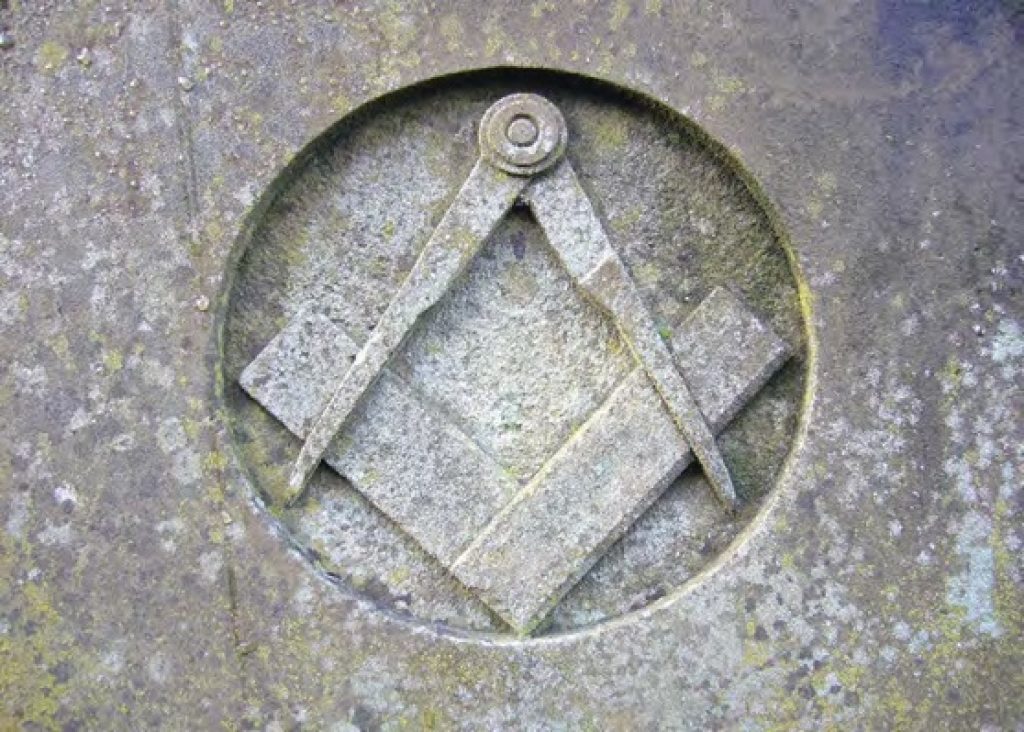
Arguably no organization in the modern Western world- excepting, perhaps, the Bavarian Illuminati- has engendered more suspicion and given rise to more conspiracy theories than the various Lodges, Rites and Appendant Bodies which fall under the wide umbrella of Freemasonry. Over the past 300 years, Freemasons have been suspected of everything from performing secret satanic rituals, to fomenting the American and French Revolutions, to producing the notorious 19th Century English serial killer Jack the Ripper, to ultimately trying to take over the world. With so many different legends, theories and myths surrounding Freemasonry, it can be hard to separate fact from fiction. Who really are the Freemasons, why do some people think they can trace their origins back to the Knights Templar, and what evidence do we have to suggest they buried the Templar treasure on Oak Island?
In order to come to a better understanding of Freemasonry, we must first understand something of its history. Both professional historians and Freemasons alike generally agree that modern Freemasonry can trace its origins back to medieval Scottish, English, and French stone mason guilds.
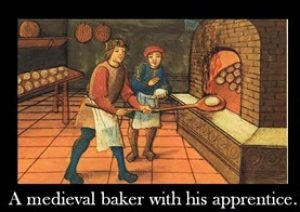 Medieval guilds were organizations composed of generally middle class men of a similar trade who banded together for mutual aid and protection. There were two main types of medieval guilds in Europe: merchant guilds and craft guilds. Merchant guilds were formed in order to combat the sometimes-excessive taxes on goods levied by feudal lords, and to ensure protection against bandits and highwaymen who made their living preying on lone travelers. Craft guilds, on the other hand, were formed by tradesmen who specialized in particular industries like carpentry, painting, tailoring, cordwainery, baking, and stone masonry. These craft guilds harboured jealously-guarded trade secrets which ensured their monopolies over whatever industries they specialized in.
Medieval guilds were organizations composed of generally middle class men of a similar trade who banded together for mutual aid and protection. There were two main types of medieval guilds in Europe: merchant guilds and craft guilds. Merchant guilds were formed in order to combat the sometimes-excessive taxes on goods levied by feudal lords, and to ensure protection against bandits and highwaymen who made their living preying on lone travelers. Craft guilds, on the other hand, were formed by tradesmen who specialized in particular industries like carpentry, painting, tailoring, cordwainery, baking, and stone masonry. These craft guilds harboured jealously-guarded trade secrets which ensured their monopolies over whatever industries they specialized in.
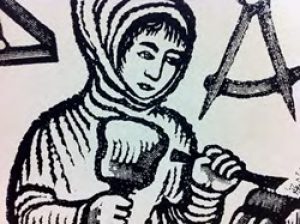 Medieval stone masonry guilds, like many other craft guilds at the time, were egalitarian meritocracies in which members were ranked based on their skills and experience as opposed to their birth or class backgrounds. Like modern-day tradesmen and their contemporary guildsmen, medieval stone masons adopted a three-part hierarchy. At the bottom of the hierarchy were the Entered Apprentices- young, inexperienced masons who worked under the supervision of a Master. Next in line were the Fellows of the Craft, or Journeymen- masons who had completed their apprenticeships and were fully educated in the masonic trade, but had yet to become Masters. At the top of the hierarchy were the Master Masons- skilled and seasoned craftsmen who had presented a satisfactory ‘masterpiece’ (ex. a stone gargoyle sculpture), along with a sum of money, to the other Master Masons in the guild. Each strata in the masonic hierarchy had its own secret handshake, which masons used to prove their rank upon entering a new guild.
Medieval stone masonry guilds, like many other craft guilds at the time, were egalitarian meritocracies in which members were ranked based on their skills and experience as opposed to their birth or class backgrounds. Like modern-day tradesmen and their contemporary guildsmen, medieval stone masons adopted a three-part hierarchy. At the bottom of the hierarchy were the Entered Apprentices- young, inexperienced masons who worked under the supervision of a Master. Next in line were the Fellows of the Craft, or Journeymen- masons who had completed their apprenticeships and were fully educated in the masonic trade, but had yet to become Masters. At the top of the hierarchy were the Master Masons- skilled and seasoned craftsmen who had presented a satisfactory ‘masterpiece’ (ex. a stone gargoyle sculpture), along with a sum of money, to the other Master Masons in the guild. Each strata in the masonic hierarchy had its own secret handshake, which masons used to prove their rank upon entering a new guild.
Members of the masonic guilds of medieval Europe were highly sought after by kings and bishops due to their valuable and carefully-guarded trade secrets. These secrets included a knowledge of mathematics and geometry, as well as practical tried-and-true methods of quarrying, shaping and dressing stone, architecture, engineering, and stone carving. With their secret knowledge and skills, the stone masons of the Middle Ages built towering castles and spectacular Gothic cathedrals- like Notre Dame Cathedral in Paris and Westminster Abbey in London- all throughout Europe. Their special skills and knowledge put them in such high demand that they were free to travel throughout Christendom to look for work, thus earning them the name “free masons.”
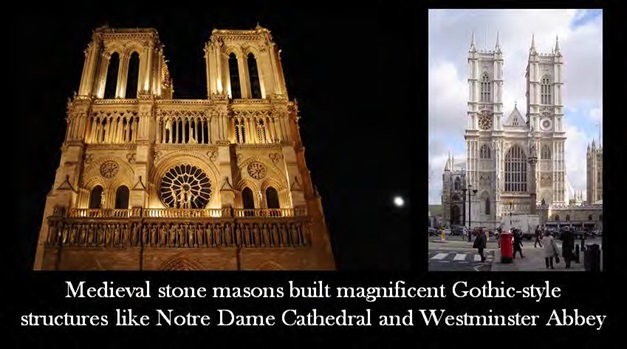
According to legend, when the Knights Templar were arrested in France on October 13, 1307, on the orders of King Philip IV, a number of French Templars escaped the country and fled to Scotland along with the Order’s most valuable treasures. There, they found refuge in the lodge of one of the local stone mason guilds. Out of gratitude towards their benefactors, the outlawed knights revealed the nature of their treasure to the masons and taught them their secret initiation ceremonies. The Templars eventually assimilated into the guild, and the guild adopted their secret rites as their own.
The question of whether or not the last French Templars were absorbed into a Scottish stone mason guild is hotly contested by historians. However, it is widely accepted that another subgroup of Scottish society slowly began to infiltrate masonic lodges after the Middle Ages, during the Renaissance. Starting in the early 1500’s, open-minded Scottish gentlemen and nobles began to associate with the rough, lowborn tradesmen of the masonic guilds. Many of them were attracted to the guilds’ mystery. With the advent of the printing press, the trade secrets of the masonic guilds gradually became public knowledge. The secret initiation ceremonies for Entered Apprentices, Fellows of the Craft, and Master Masons, however, remained secret, shrouding the masonic guilds in an aura of mystery and romance which many European noblemen found irresistible. These aristocrats wanted to bask in the glory of the prestigious craftsmen known to be privy to secret knowledge, and the masons were more than happy to accept these wealthy and cultured apprentices into their circles. Another aspect of the masonic guilds which was hugely appealing to Scottish gentlemen was the fact that all guild members- regardless of social standing, ethnic background, and (most importantly) political and religious bent- were more or less considered equal. All throughout the Renaissance, the British Isles were plagued by bloody civil wars between Catholics and Protestants. For Scottish gentlemen, it was refreshing to enter into a fraternity in which their political leanings and religious persuasions were not only not scrutinized but also largely ignored.
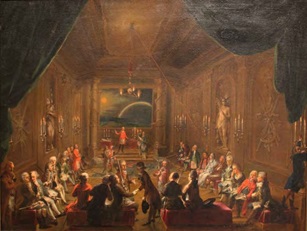 Hard on the heels of the religious wars of the Renaissance came the Age of Enlightenment, a period characterized by the concept that reason is a legitimate means by which to define and identify truth (in addition to, or sometimes as opposed to, divine revelation and Church doctrine). During this period, freethinking intellectuals, scientists, and artists of aristocratic stock discovered that, inside masonic circles, they could openly share and discuss their various theories and ideas without fear of condemnation. These gentlemen signed up as apprentices to the masonic guilds en-masse, and the old-hand stone masons- relishing in the prestige, cultured conversation, fine food and quality alcohol that followed- happily accepted these new initiates. In time, the gentlemen of the masonic lodges began to outnumber the skilled labourers, and the focus of the lodge meetings gradually shifted from actual masonry work to philosophical discussion. Some of these early gentlemen Masons included artists, scientists and politicians such as Sir Isaac Newton, Voltaire, Mozart, Joseph Hadyn, John Locke, Edward Jenner, Napoleon Bonaparte, and Robbie Burns.
Hard on the heels of the religious wars of the Renaissance came the Age of Enlightenment, a period characterized by the concept that reason is a legitimate means by which to define and identify truth (in addition to, or sometimes as opposed to, divine revelation and Church doctrine). During this period, freethinking intellectuals, scientists, and artists of aristocratic stock discovered that, inside masonic circles, they could openly share and discuss their various theories and ideas without fear of condemnation. These gentlemen signed up as apprentices to the masonic guilds en-masse, and the old-hand stone masons- relishing in the prestige, cultured conversation, fine food and quality alcohol that followed- happily accepted these new initiates. In time, the gentlemen of the masonic lodges began to outnumber the skilled labourers, and the focus of the lodge meetings gradually shifted from actual masonry work to philosophical discussion. Some of these early gentlemen Masons included artists, scientists and politicians such as Sir Isaac Newton, Voltaire, Mozart, Joseph Hadyn, John Locke, Edward Jenner, Napoleon Bonaparte, and Robbie Burns.
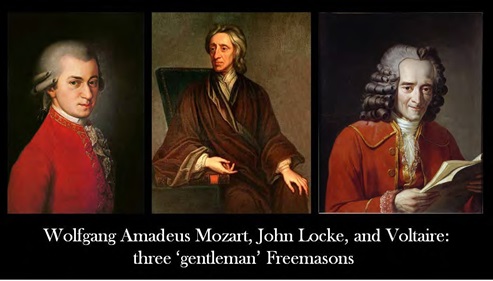
These gentlemen-dominated masonic lodges soon became discontented with the guilds’ casual meetings in alehouses and coffeehouses. They desired more structure, and eventually one of these lodges took action. In 1717, the first Grand Lodge was established in London, England. The Lodge’s founders announced that the Grand Lodge alone claimed the exclusive right to establish new Masonic lodges in England. English masons outside London took umbrage to this decree and established the Grand Lodge of All England in the city of York. In 1736, Scottish masons hopped on the bandwagon by forming the Grand Lodge of Saint John of Scotland. And in 1751, a group of Irish-born Londoners followed suit by forming the Antient Grand Lodge.
Although Freemasonry certainly had its infancy in Scotland and its coming of age in England, it quickly spread to France and to the British colonies in North America. Many of the ideals espoused by Freemasonry, such as freedom of thought, equality, and brotherhood, spilled over into politics. In the Americas, Masonic colonists dissatisfied with British rule were foremost among those who ultimately started the American Revolution. Of the fifty-six American colonists who signed the Declaration of Independence, nine were Freemasons. Some of the most prominent of these American Freemasons- including George Washington, Benjamin Franklin, and Paul Revere- are now considered to be Founding Fathers of the United States of America.
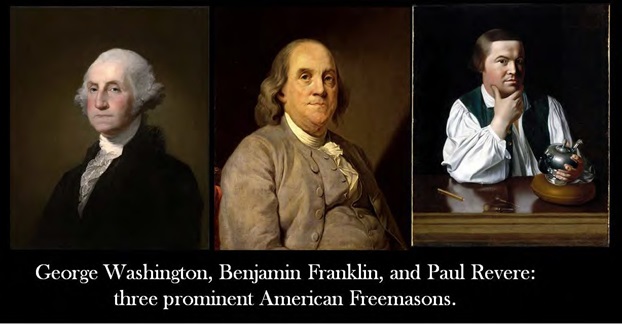
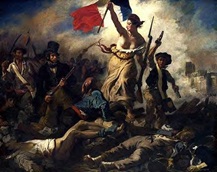 Shortly after the American Revolution, the people of France became dissatisfied with the ruling Capetian regime and similarly deposed it. In the bloody Reign of Terror that ensued, French revolutionaries rallied to the cry of “liberte, egalite, fraternite,” or “freedom, equality and brotherhood”, three core tenets of Freemasonic ideology.
Shortly after the American Revolution, the people of France became dissatisfied with the ruling Capetian regime and similarly deposed it. In the bloody Reign of Terror that ensued, French revolutionaries rallied to the cry of “liberte, egalite, fraternite,” or “freedom, equality and brotherhood”, three core tenets of Freemasonic ideology.
Freemasonry thrived in the 1700’s and expanded throughout most of the 1800’s. A number of books painting Freemasonry in a bad light were published in the 19th Century, however, and soon Anti- Masonic sentiment abounded. During this time, a myriad of conspiracy theories surrounding Freemasonry were born, many of which survive to this day. One of the most enduring theories is that the Freemasons are the successors of the Knights Templar. One offshoot of this theory is that the Freemasons came to Oak Island sometime in the 1700’s, where they buried the legendary Templar treasure.
Want to Help?
Thanks for reading! If you enjoyed this article and would like to help support this website, please check out our online bookstore:







Cheryl Moisey
Would like to purchase the 2 books
Hammerson Peters
That’s great! I’m so glad you’re interested. If you click the images of the books at the bottom of the article, it will take you to the places where you can purchase them.